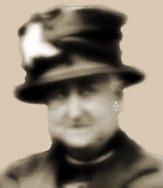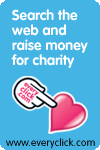Guest blogging: it's not just for Ouch any more!Although it is connected to Ouch. B Dude Esq has been so exercised by the recent discussions on the Ouch weblog re models of disability that he found himself generating a comment which - alas! - was too lengthy for the BBC's IT mavens to process.Some money having changed hands, I have generously (and of my own free will) agreed to host the comment on mine own blog. And here it is:"Look.
The social model is not about helping anyone. It is an entirely passive way of describing an understanding of what equality means.
There is no such thing as “the medical model” either.
Are you ready for a potted history? Here we go then…
(NB Please be aware that the following is intended to be an “artistic impression” rather than a historically accurate account adhering to a rigid time-line.)
Once upon a time, there were no disabled people, no models and no such thing as equality. You lived in a cave, you hunted if you could, you mated if you could attract a partner and if, for whatever reason you were not fit, athletic or simply gorgeous enough to succeed, you died.
As society developed and formalised, things changed a bit. Rather than nature simply taking its course and weeding out the useless, opinions were formed by others about these poor unfortunates who were not “like us”. People who were not physically or mentally “normal” were cripples or invalids, handicapped by their inability to function in mainstream society and therefore, depending on their level of dysfunction, to be:
- Pitied and, if they were lucky, given charity through some kind souls’ altruism or because they were pesky beggars;
- Segregated – locked away from public view, often treated less well than captive animals, sometimes ridiculed as freaks but always considered subnormal; or
- Eliminated as “messy eaters” or for other “valid” reasons, either to purify the gene pool or because they were embarrassing examples of God’s apparent failure or of demonic success.
Similarly, homosexuality was an immoral perversion, along with BDSM, onanism and, in some cases simply taking pleasure in sex. Women were chattels, entirely the property of men. Black people had smaller brains than us and were little better than animals; definitely a different and inferior species.
There were no words, theories or models to explain these behaviours. They simply existed, were the norm and what every right-thinking person believed.
Gradually, some enlightened individuals began to wonder if the superiority of the White Anglo-Saxon Male was not an entirely satisfactory way of viewing the world. And some philanthropic souls started to apply charity more liberally to those who had been previously treated as sub-human. They pitied those less fortunate than themselves who, through no fault of their own, had been born with deficiencies such as bodily dysfunction, perverted sexuality, non-Caucasian features or the wrong gender. Needless to say, there was a very strong backlash also amongst those who wished to preserve the status-quo, improve the gene pool or simply keep their sons and daughters safe from these disturbing abominations.
There were no words or models to explain this either. It just happened.
[…Fast Forward…]
And then, in the mid-to-late twentieth century, once the general concept of equality was beginning to take root in western society, some bright spark(s) said “Hey, if equality exists and is to be meaningful, society at large has to take account of diversity”, which is to say that nobody is “normal” but that we each have our own unique identity comprising who we are, what we are like, where we were born, how we were brought up, what we believe etc.
So the disabled people’s movement was born, along with the suffragettes, black power, gay lib etc…
Then the disabled people’s movement came up with a way of describing how society needs to behave and think if true equality is to come about. And the first idea was to stop treating people whose physical and mental function was significantly different to that of the majority as if they needed to be normalised. Rather, to accept that the spectrum of what constitutes “normality” is much broader than the church, the medical profession or indeed the mob mentality had previously purported. Indeed, everyone is “normal” and therefore has equal rights with everyone else. And the term “disabled”, in the context of this viewpoint, came to mean “unable to function in society because of the barriers to inclusion found there”.
And, of course, pretty much every other equality movement reached much the same conclusion.
So, for disabled people, this in turn means that everything in the built and social environments has to change – in order to allow the equal participation which comes with equal rights. The way we deliver education, the way we plan buildings, towns and infrastructure, the way we present the arts and entertainment, the way we speak to and think about each other… the list is literally endless. This way of thinking is described as the social model. It doesn’t actually do anything; it doesn’t change anything; it doesn’t make anyone’s pain go away (including mine – which is chronic in every sense of the word) – all it does is describe what needs to happen in order to bring about effective change.
And, by default, the description of things as they were – and generally still are - has become known as the medical model. This too doesn’t do anything, change anything or cure anyone. It simply encompasses everything which happens to people who are outside the subjective but narrow spectrum of acceptable physical or mental “normality” which prevailed pretty much universally prior to the social model and still continues to prevail across most of the world 50-odd years afterwards.
~*~*~*~*~
That these two “models” or viewpoints do co-exist is evident, even from within the Ouch! website. And I believe this is inevitable; after all everybody’s definitions of what the world is like (and what it should be like) is informed by their own unique circumstances and so differs, in some detail or other, from those of anyone else. However we can decide for ourselves where we stand on key issues and with whom we choose to align ourselves.
So, in the blue corner, we have the Medical Model: A way of categorising people according to where they stand (sit, lie or dribble) alongside the majority’s understanding of what constitutes normality and which proposes that the key to inclusion is in changing the individual to help them to become normal.
And in the red corner, I present the Social Model: The viewpoint which says that everyone (and I do mean everyone) is normal by their own standard – I am what I am – and that, rather than insisting that anyone must change to be more like someone else’s idea of beauty, normality or perfection, we should each accept, and include fully, everyone exactly as they are.
The social model simply states that I am normal because everybody is normal, and describes how things need to be in order to facilitate full equality. It doesn’t stipulate that medical cures are undesirable and shouldn’t be sought; it doesn’t insist that anyone needs to be happy the way they are or that they should not seek change, self improvement or even cosmetic surgery.
Every other approach outside of the social model, whether subconscious or intentionally proposed, is based on the single assertion that I am not “normal”.
We have, amongst others,
the medical model – dysfunction must be cured;
the religious model – dysfunction is either a punishment or a test of faith;
the gene purity / eugenics model – dysfunction must be eradicated through selection at conception or birth (or beyond);
the ghetto model – dysfunction must be kept out of sight and mind, either for their own benefit or for that of society at large;
the charity model – dysfunction must be awful; here, buy yourself some crutches or a nice hat, but don’t expect me employ you or include you alongside my family and friends;
the improvement model – abnormality is awful but, with a snip here, a graft there or some pretty pills, you might be able to fit in more comfortably with the way we do things round here (actually this is far from disability specific. Ask any 16 year-old in the waiting room for her first breast-enlargement);
the judgement model (this one in particular is often applied to new-born people or those who have recently had accidents) – dysfunction will prevent this person from ever having a decent quality of life so best to help them just slip away quietly.
All are indisputably rooted in a concept of sub-normality.
In society at large, the social model is just one of a bewildering variety of options, all waiting on the shelf for you to pick one (or not). A bit like political philosophies or religions / faiths / denominations, they do co-exist insofar as they are all “out there” simultaneously and irrespective of whether they have millions of subscribers or just one or two.
However, I submit that, apart from people with multiple-personalities, the social model cannot co-exist with any of the others in any one person’s head. All the social model does is to describe me as normal. No other viewpoint or model does this. How then can I possibly “support” two conflicting ideas – one of which insists that I am normal and the other which stipulates, irrespective of what needs to be done about it, that I am not?"













